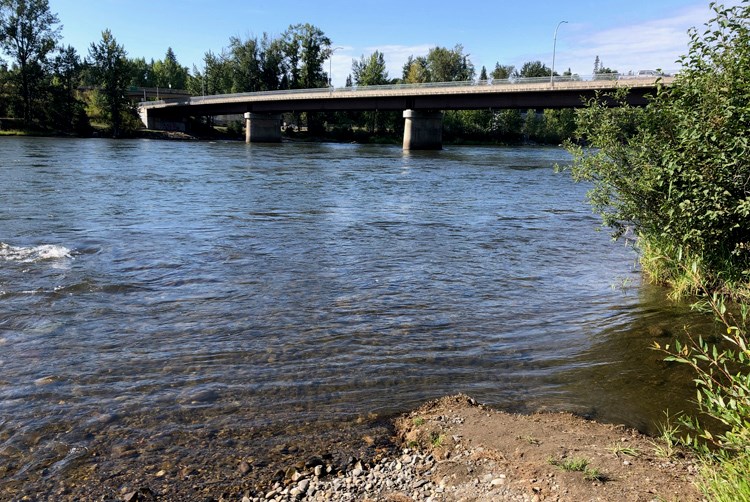Water flow on the Nechako River is more than 30 per cent above average for this time of year, but the cause has more to do with snow than aluminum, according to a local expert.
Rio Tinto operates the Nechako Reservoir to provide water to its hydro-electric power facility at Kemano. The Kemano generating station powers the company’s Kitimat aluminum smelter, which is running at 25 per cent capacity due to a four-week-long strike by workers. Water from the reservoir flows to generate power at Kemano, and into the Nechako River via the Skins Lake Spillway and the Cheslatta River.
Wayne Salewski, president of the Vanderhoof-based Nechako Environment and Water Stewardship Society, said he hasn’t seen any changes in Rio Tinto’s operation of the Skins Lake Spillway since the start of the strike by Unifor members in Kitimat.
“(The Nechako) is a little high. The river was really full,” Salewski said. “One of the reasons is the snowpack on the mountains… was above average by quite a bit. That resulted in a tremendous amount of inflow into the reservoir.”
Levels on the Nechako Reservoir went from being below-average last year to essentially full-capacity by this summer, he said.
According to data reported online by Rio Tinto the Nechako Reservoir level peaked at just above 2,799 feet in mid-July, roughly two feet above typical reservoir levels. As of Thursday, the reservoir had dropped to 2,796.84 feet – roughly half a foot above typical levels.
Salewski said he’s spent more than 100 hours on the river this summer, and seen “just a nice, continuous flow through” the Skins Lake Spillway.
Water flow on the Nechako at Vanderhoof on Thursday was measured at 318.78 cubic metres per second – 31 per cent above the seasonal average of 243 cubic metres per second. Water discharge from the Skins Lake Spillway was more than 105 cubic metres per second above the summer minimum level of 170 cubic metres per second.
Rio Tinto is continuing to run the Kemano power station and is selling the surplus power to the BC Hydro grid, Salewski said. A spokesperson for Rio Tinto confirmed that.
“The demand for electricity this summer was extraordinary, with the heat,” Salewski said.
Operation of the Kemano power station has been deemed an essential service the BC Labour Relations Board, allowing it to continue operations during the strike.
“Our top priority in the watershed is to continue managing the Kemano hydro-power facility and the Nechako Reservoir safely, to protect the environment and the diverse interests of our host communities,” a Rio Tinto spokesperson said in an email.
Power demand at the Kitimat smelter is only one factor in making river flow decision, and regular adjustments are made based on current and projected weather.
Negotiations between Rio Tinto and Uniform Local 2301 are expected to resume in Vancouver this week, according to a company memo issued to employees on Tuesday. The strike began on July 25, after seven weeks of failed bargaining efforts regarding issues of employee benefits and the use of contractors, along with other issues.
- With files from Binny Paul, Local Journalism Initiative Reporter/Terrace Standard



